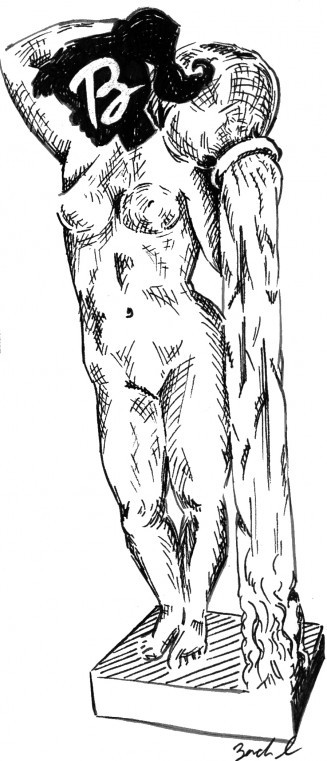The media’s portrayal of women imposes an impossible standard
February 23, 2011
Fashion designer Ralph Lauren recently fired a female model because she was “too fat,” even though she was a size 4. Stories like this point to a problem across our country with women and their body image.
According to the American research group Anorexia Nervosa & Related Eating Disorders, Inc., “one out of every four college-aged women uses unhealthy methods of weight control — including fasting, skipping meals, excessive exercise, laxative abuse, and self-induced vomiting.”
Before you argue that the ads in the magazines with these skinny, beautiful women do not really affect girls, look at the statistics.
According to a 2008 article on HealthyPlace.com, “Sixty-nine percent of girls said that magazine models influence their idea of the perfect body shape, and the pervasive acceptance of this unrealistic body type creates an impractical standard for the majority of women.”
It is hard to love our average-sized bodies when we have ridiculously skinny women as our models for beauty in every magazine, newspaper and billboard. The average woman in America is not a size 0, so why do advertisers cover their pages with them?
Models are supposed to show off the products in a way that makes the public want to buy them. Today’s advertisements make it more likely for women to invest in diet pills and exercise equipment rather than blue jeans and swimsuits.
According to the same article, fashion models “weigh 23 percent less than the average female, and a young woman between the ages of 18-34 has a 7 percent chance of being as slim as a catwalk model and a 1 percent chance of being as thin as a supermodel.”
Maybe instead of pushing an impossible standard of what women should be, advertisers should focus on giving an accurate representation of what women are.
“I believe that young girls are very vulnerable to these images and the impossible thinness they demand,” said Laura Vazquez, associate professor of communication and chair of the Presidential Commission on the Status of Women. “But I am not sure I see any change coming any time soon–unless we all demand changes of advertisers perhaps by not buying magazines or by turning off our TVs.”
Even when using the absurdly skinny models, almost all companies use computer design to airbrush the models, change the size of the woman’s breasts, eye color and even length of neck. These procedures make it even more impossible for average women to obtain the look that magazines portray as ideal.
The worst part is that many women do not realize that most men actually prefer more curves on a woman.
“In my opinion, girls with curves are much more attractive,” said Alex Madl, freshman pre-physical therapy major. “Girls are like a road, so to speak. If I’m sitting in a Ferrari with an open road ahead of me, I want a road that is curving, winding and unique to keep things interesting, not a road that is straight and generic.”
Every woman should feel beautiful in her own skin. Magazines do not allow that with their display of one body type. Every woman should be able to look at those magazine ads and say, “I do not have to look like that to be beautiful.”
But the reality is that women are being influenced by these ads, even if you do not think they are. Media is distorting society’s conception of true beauty and it needs to be readjusted.



